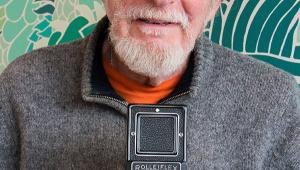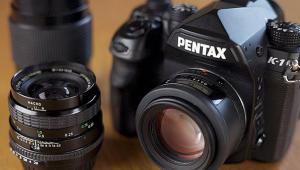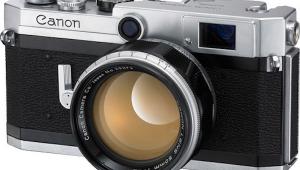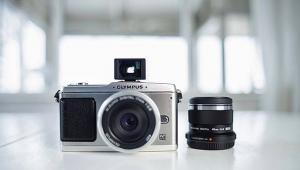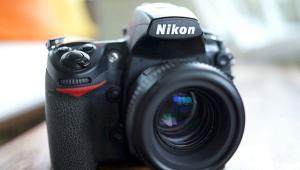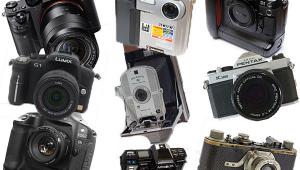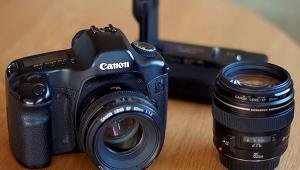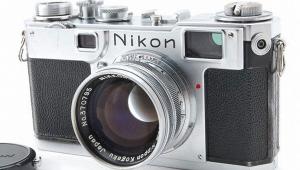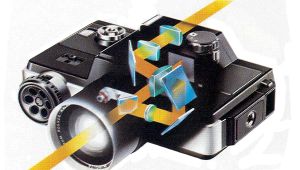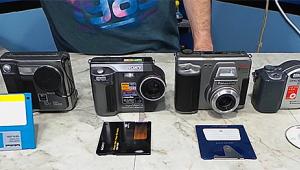The Minox: A Closer Look at Every Spy’s Favorite Camera

You’ve seen it in films and on television: the spy breaks into the villain’s office, removes a tiny camera from his jacket pocket and begins shooting pictures of secret plans.
The camera is a strange one, made of shiny metal, long and slim, about the size of an index finger. The spy snaps it open by pulling the ends, which extends the body to reveal the lens and viewfinder, presses the shutter button, then closes it and opens it again for the next shot.
The camera is not a figure of fiction. It’s real and was the brainchild of Walter Zapp, a Latvian photographic dealer, who was among the first in the Baltic States to receive samples of the Leica in 1925. Fascinated by miniature cameras (which the Leica was considered to be at that time), he began working on plans for something even smaller.
Taking the name from the way many camera names ended in the letters “ax” or “ox.” He added “min” for miniature and came up with Minox. The camera was built by Valsts Electro-Techniska Fabrika (VEF) in Riga and launched in 1937. Today, that first model is referred to by collectors as the Riga Minox.

Steel Stealth
The Minox was made of stainless steel, giving it a weighty feel. It measured 3x1x0.5 inches in its closed position, extending to 3.75 inches when open for action. Opening the body revealed the Minostigmat 15mm f/3.5 lens alongside the viewfinder. A slider above the viewfinder pushed a light yellow filter over the lens.
The top of the body featured three controls plus a window to show the film frame counter. Two dials were used to focus the lens from eight inches to infinity and to adjust shutter speeds between 1/2 and 1/1000 second. The lens’s aperture remained fixed at f/3.5, so shutter speeds alone were used to control exposure. The only other control was the shutter button, which lay between the two dials. Once it had been used to release the shutter, it could not be pressed again until the camera had been closed and opened once more, which tensioned the shutter and advanced the film.
With the body open, pressing a catch on the base allowed a panel to be slid aside and the film to be dropped into the body in the form of two linked cassettes with film wound from one to the other. The film size, originally planned as one quarter the width of 35mm at 8.75mm, was later standardized throughout the Minox range at 9.5mm wide.

New Versions
The outbreak of World War II, two years after the introduction of the Minox, saw upheaval in Latvia as it was occupied first by the Russians, followed by the Germans, then by the Russians again. Limited production of the Minox continued during these turbulent times, but when the war ended in 1945, production of the camera resumed in West Germany.
First off the production line was the Minox II, whose chief difference from the Riga was its lighter aluminum body shell to replace the original stainless steel. Aluminum continued to be used for all future cameras.
From then until the 1980s, new versions of the Minox continued to be launched. Landmarks included the 1958 Minox B, first with a built-in Selenium meter linked to the shutter speed dial; the 1969 Minox C, which added a battery and substituted a CdS meter for manual or fully-auto exposure; and the 1981 Minox EC smallest of all the cameras, featuring fully automatic, point-and-shoot exposure.

Cool Accessories
One thing that makes Minox cameras so attractive to collectors is the range of high quality accessories available. Many were based on a series of clamps whose designs varied with their associated accessories. Each clamp held the camera body, incorporated a Minox tripod fitting where necessary and positioned a fitting for a cable release above the camera’s shutter release button.
The tripod was one of the most elegant accessories. It comprised a 7-inch slim metal tube with a tiny ball and socket head on top to screw into the appropriate camera clamp. The tube became one leg of the tripod. Unscrewing its end revealed two more legs, one inside the other, each of which screwed into the base of the ball and socket head to provide the required three legs.
The copying stand utilized another clamp to position the camera above the subject at distances that could be varied between 7 and 20 inches by means of four telescopic legs.

Another design of clamp held the Minox securely behind a pair of binoculars to effectively turn the camera’s built in lens into a telephoto.
For cameras that were synchronized for flash, there were accessories that slid over the end of the body to connect with the flash synch socket and accommodate AG-1 bulbs or flashcubes.
A right-angle viewfinder accessory was available that used a mirror to turn the camera’s eye-level viewfinder into a waist-level type. Another separate reflex viewfinder slid over the end of the camera body to provide a waist-level view, but with a much larger and clearer viewing screen.

For the Minox C camera, with its built-in meter, there were slide-on filters that covered both the lens and the meter cell to compensate for the filter factor when exposure was measured.
To help measure close camera distances, a chain was available which, when attached to the camera, was knotted at distances of 8, 10, 12 and 18 inches.
Among many more accessories there was the Minosix exposure meter with its own built-in viewfinder, calibrated in shutter speeds since the Minox lens was always fixed at its maximum aperture; a slide viewer and cutter in one device; slide mounts, projectors, an enlarger, an underwater housing… and many more.

What They’re Worth Today
Unlike some film sizes that went on to be used by other manufacturers, very few non-Minox cameras were made to take Minox cassettes. The few exceptions included the Yashica Atoron, a Minox-shaped camera made in 1965; the Roundshot, a miniature panoramic camera made in Switzerland in 1987; and the Japanese Minimax-Lite, from the 1980s, which combined the camera with a cigarette lighter.
In the late 1990s the Minox name again went through a metamorphosis with the introduction of miniature copies of classic Leicas, which accepted Minox film cartridges. The first two cameras were copies of the Leica IIIf and M3, followed by a copy of the Contax I. Each measured a mere 2.75x1.5x1.5 inches. Later miniature Rolleiflex and Hasselblad copies were also introduced to take Minox film.

It is through these beautiful little cameras that the Minox name and reputation for miniature perfection lives on today.
Approximate values: Riga Minox, $750; Minox B, $100; Minox C, $150; Minox EC, $90. Various accessories and clamps, $20-60


